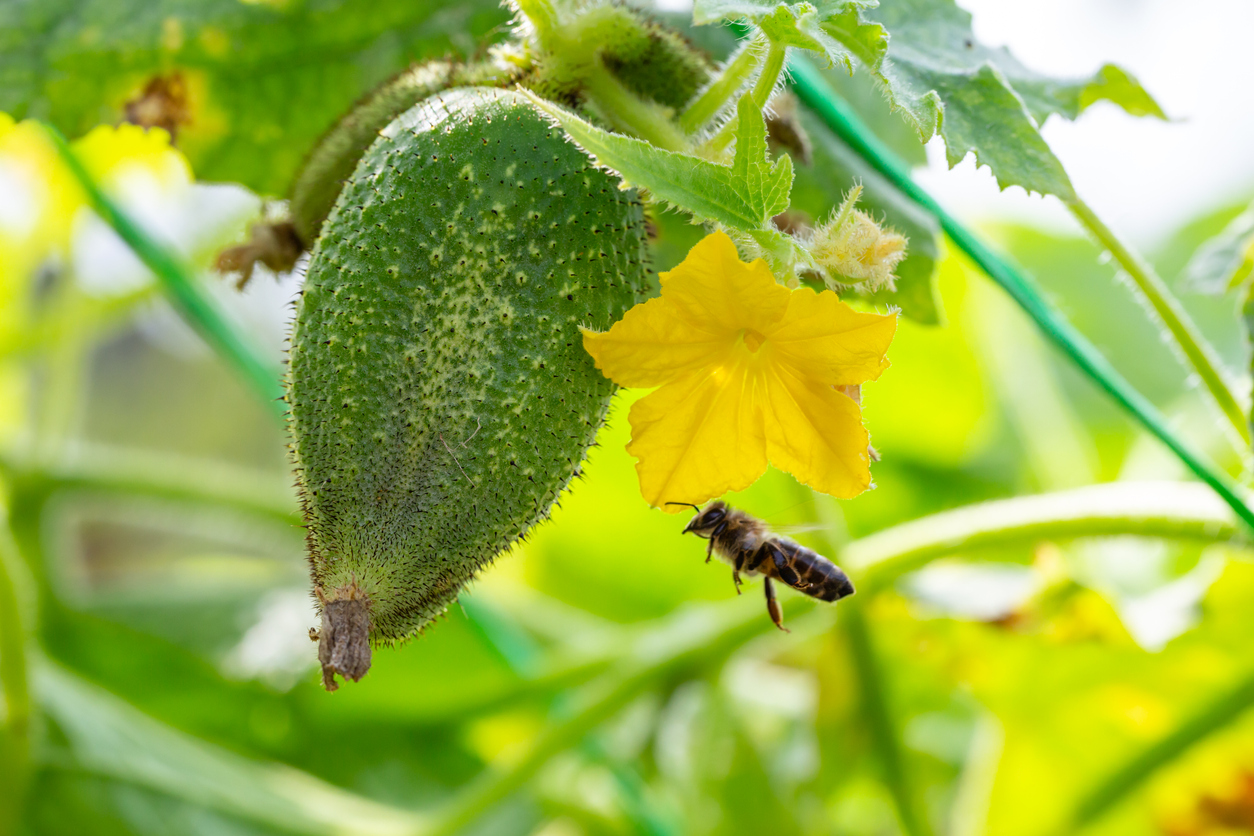

We may earn revenue from the products available on this page and participate in affiliate programs. Learn More ›
Millions of Americans all over the country, from the East Coast and Midwest to the mountain states and even the Pacific Northwest, have dealt with air quality alerts during the summer of 2023 due to Canadian wildfire smoke. And if you grow your own food during the summer months, you may have concerns about how all that smoke-filled air is affecting your plants.
The good news is that when it comes to food safety, crops impacted by smoke are almost always safe to eat. A 2020 California study found that among the 200 samples of greens, such as lettuces, kale, and chard, that were exposed to smoke and ash from wildfires, found no detectable levels of harmful chemicals such as lead, arsenic, or mercury. While experts note there should be no long-term impacts on crops from wildfire smoke, that’s not to say that farmers haven’t reported some issues stemming from wildfire smoke during the summer of 2023.
RELATED: 10 Essentials for Homeowners Dealing with Wildfire Smoke
1. Sunlight and Ozone

Brian Bates owns Bear Creek Organic Farm in Petoskey, Mich. Bates said the wildfire smoke much of the country has experienced in 2023 is comparable to sustained cloudy weather as it reduces the amount of sunlight on crops and thus impacts the ripening process.
“I really noticed it with ripening crops, like fruiting crops such as tomatoes,” Bates said. “When we had a long stretch of hazy skies, it definitely impacted tomato ripening and the pace slowed way down. Then when the smoky skies went away, ripening returned to normal.”
The reduction of sunlight and an increase in ozone levels due to wildfire smoke can impact photosynthesis, which is the process by which plants use sunlight to synthesize foods from carbon dioxide and water, according to Sotirios Archontoulis and Mark Licht, professors at Iowa State University.
RELATED: How to Protect Your Property From Wildfires
2. Taste

Bates noted that while his plants in Northern Michigan have mostly just seen a lack of sunlight due to the wildfire smoke, some farmers in other parts of the country haven’t been as lucky. “I’ve heard from some out west that they’ve had issues with actual ash on crops such as lettuce, but that’s because they are closer to the source of ignition,” Bates explained.
Having ash directly on crops can create an even thicker barrier to sunlight, while also impacting taste. There have been issues in some parts of the world with grapes that need to be discarded due to flavor changes, but these instances are rare.
RELATED: The 10 Best Air Purifiers for Fresh Air, Tested
3. Pollinators

For regions that experienced heavy levels of wildfire smoke, pollination could be an issue as pollinator activity is often reduced due to hazy skies. This can lead to issues with crop pollination and crops falling behind schedule.
In 2020, Oregon was ravaged by the worst fires in the state’s history. According to Oregon State University’s Extension Service, the thick smoke generated by the fires had an effect on bees’ behavior, as the smoke from the fires lowered the air temperature and bees are less active when it’s cooler. Smoke can also impede bees’ navigation systems, making it harder for them to find flowers. Furthermore, ash from wildfires may “interfere with the ability of bees to breathe, smell, taste, as well as have other effects on their physiology,” the extension service notes.
RELATED: 9 Things You Won’t Believe Homeowners Insurance Doesn’t Cover
4. The Good News

In addition to the fact that wildfire smoke does not have a large, negative impact on food safety, there are some positive aspects to how plants respond to wildfire smoke. For instance, light to moderate wildfire smoke may actually enhance plants ability to grow since the light is diffused and thus it penetrates deeper into the plant canopy. As a result, this increases photosynthesis among lower leaves on the plant, not just those at the top.
Smoky skies can also lead to lower leaf temperatures since direct sunlight on plants is reduced. Lower leaf temperatures reduce the amount of effort a plant needs to expend in order to cool itself, thus lowering overall water stress on crops.
“The good news is that the wildfire smoke won’t leave any long-term impact,” Bates said of both residential and commercial crops. “When it comes to crops, for the most part, it’s just like cloudy weather.”
